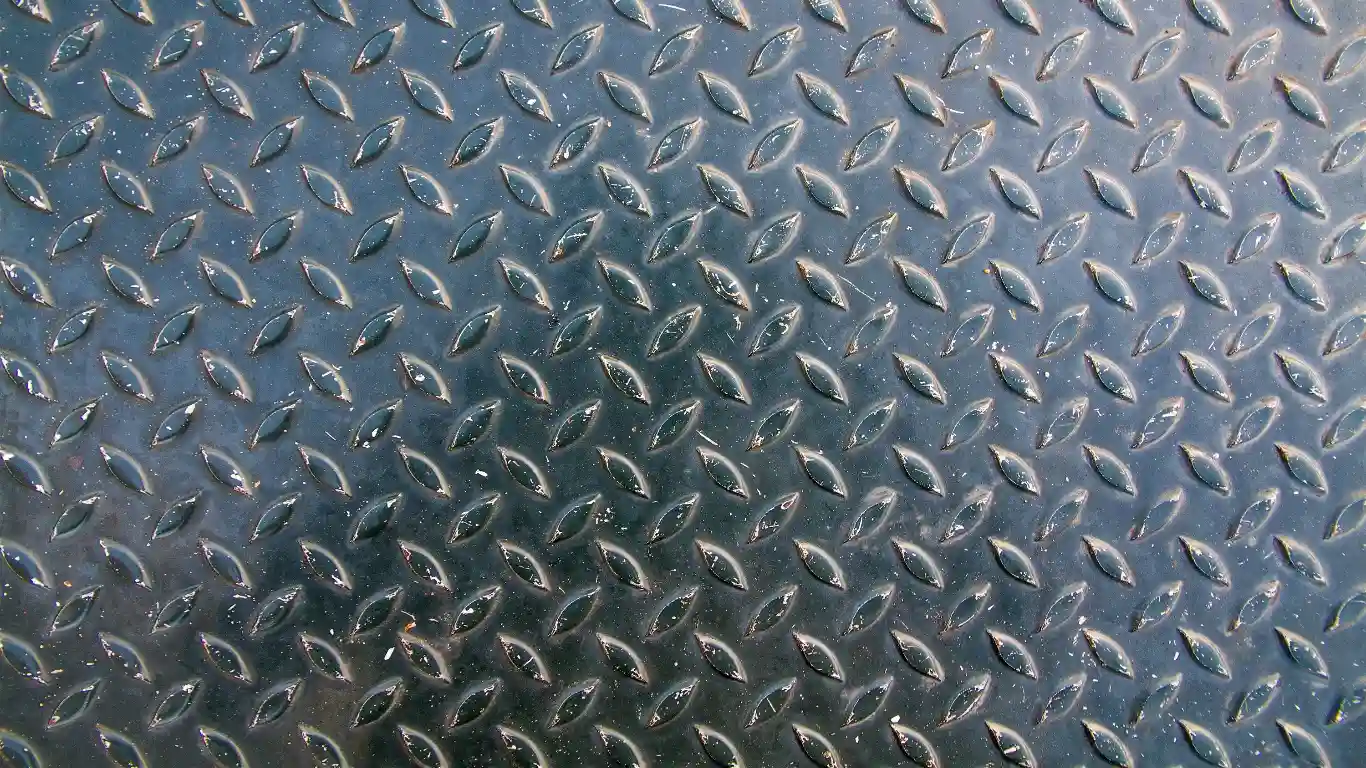Characteristics of Aluminum Plate and Steel Plate
When evaluating materials for construction, manufacturing, or engineering, understanding the key characteristics of aluminum plate and steel plate is essential. The debate around whether an aluminum plate is stronger than a steel plate revolves heavily around their distinct properties and applications.
Composition and Material Properties
Aluminum plate and steel plate differ significantly in their composition. Aluminum plates are made primarily from bauxite ore, which is refined into alumina and then smelted into aluminum. This lightweight material often contains alloying elements like copper, magnesium, and silicon to enhance its strength and durability.
In contrast, steel plates are composed predominantly of iron, combined with carbon and other elements including manganese, chromium, and nickel. Steel’s carbon content plays a crucial role in its strength and hardness, making it one of the most robust building materials available.
Both materials’ distinct compositions result in differing material properties. Aluminum’s lighter density, approximately one-third that of steel, makes it exceptionally suitable for applications demanding reduced weight without compromising much on strength. On the other hand, steel’s higher density equips it with superior strength, especially in applications where weight is less of a concern.
Physical Properties
The physical properties of aluminum and steel further highlight their unique advantages and limitations. Aluminum plate is known for its excellent corrosion resistance. It forms a natural oxide layer that protects against rust, making it ideal for outdoor and marine environments where moisture presence is high.
Steel, particularly stainless steel, also boasts good corrosion resistance – albeit generally less so than aluminum. However, steel compensates with exceptional hardness and wear resistance. Steel’s toughness and ability to withstand extreme temperatures contribute to its widespread use in industrial applications.
Another critical physical property is thermal conductivity. Aluminum outperforms steel in this aspect, allowing for efficient heat dissipation. This makes aluminum plates favorable in applications involving heat exchangers and cooling systems.
Mechanical Properties and Performance
Key mechanical properties such as tensile strength, ductility, and flexibility significantly influence the performance of aluminum and steel plates in various applications.
Tensile Strength Comparison
Tensile strength is a crucial metric when determining a material’s resistance to breaking under tension. On average, steel plates exhibit significantly higher tensile strength compared to aluminum plates. Mild steel, for instance, generally has a tensile strength of around 400-550 MPa, whereas typical aluminum alloys have tensile strengths ranging from 70 to 700 MPa, depending on the specific grade.
However, certain high-strength aluminum alloys can reach tensile strengths comparable to some steel plates, making them suitable for specialized applications that demand both light weight and high strength. This comparative nuance highlights the importance of selecting the appropriate material based on specific use cases.
Ductility and Flexibility
When it comes to ductility and flexibility, aluminum plates have the edge over steel plates. Aluminum’s lower density and atomic structure confer it with a higher degree of ductility, allowing it to be stretched into thin wires and bent into various shapes without breaking. This makes aluminum an excellent choice for applications requiring complex shapes and extensive forming processes.
Steel, although generally less ductile than aluminum, excels in flexibility when it comes to withstanding stress and impact. High-carbon steels, in particular, provide exceptional impact resistance, making them suitable for heavy-load applications like construction beams and structural components.
While aluminum offers superior ductility, steel’s outstanding overall strength and versatility make it indispensable in industries where heavy-duty performance is paramount.
Applications in Various Industries
Both aluminum plates and steel plates have broad applications across multiple industries, each leveraging the unique properties of these materials.
Aerospace Industry
In the aerospace industry, the lightweight attribute of aluminum plates is particularly advantageous. Aircraft structures benefit tremendously from the reduced weight, which leads to better fuel efficiency and greater payload capacity. Aluminum’s excellent resistance to fatigue and corrosion also plays a crucial role in ensuring the longevity and safety of aerospace components. While certain steel alloys are employed in areas requiring significant strength, aluminum remains a dominant material in this industry due to its superior weight-to-strength ratio.
Automotive Industry
The automotive industry also extensively uses both materials, but for different reasons. Aluminum plates are increasingly favored for manufacturing car bodies, engine components, and wheels. The reduced vehicle weight leads to improved fuel efficiency and lower emissions, addressing both economic and environmental concerns. On the other hand, steel plates are integral to the vehicle’s structural frame, crash zones, and suspension systems because of their higher tensile strength and impact resistance. The balance of both materials allows automakers to enhance vehicle performance, safety, and sustainability.
Construction Sector
In the construction sector, the choice between aluminum and steel plates depends heavily on the specific application’s requirements. Steel plates are ubiquitous in building frameworks, bridges, and heavy-duty structural components due to their exceptional strength, durability, and load-bearing capacity. Aluminum plates, however, find application in roofing, siding, and architectural facades. Their light weight, corrosion resistance, and ease of installation make them particularly suitable for modern construction projects focusing on aesthetics and sustainability.
Advantages and Drawbacks of Each Material
While both aluminum and steel plates offer distinct benefits, understanding their advantages and drawbacks facilitates better material selection for specific projects.
Durability and Longevity
Steel plates are often celebrated for their incredible durability and life span. Well-maintained steel structures can last for decades without significant degradation, making them a reliable choice for essential infrastructure. However, they can be susceptible to corrosion if not appropriately treated, especially in harsh environments. Aluminum plates, in contrast, naturally resist corrosion and rust, which prolongs their service life in humid or marine conditions. However, aluminum’s softer nature can make it more prone to wear and tear under abrasive conditions compared to steel.
Environmental and Economic Factors
From an environmental perspective, aluminum plates have the edge. Aluminum is highly recyclable, and the recycling process requires only about 5% of the energy needed to produce new aluminum. This contributes to a more sustainable lifecycle for products made with aluminum. Economically, aluminum can be more expensive than steel, particularly when used in large quantities. Steel plates are generally more cost-effective and widely available, making them a preferable choice in budget-sensitive projects. However, steel production is energy-intensive and contributes significantly to carbon emissions, raising environmental concerns.
Final Thoughts on Choosing Between Aluminum and Steel Plates
Making an informed decision between aluminum plates and steel plates involves considering the specific demands of the application. Aluminum plates, with their light weight, corrosion resistance, and excellent thermal conductivity, are well-suited for industries prioritizing fuel efficiency, sustainability, and intricate design. Steel plates, on the other hand, offer unmatched tensile strength, durability, and cost-effectiveness, remaining indispensable for heavy-duty applications requiring substantial load-bearing capacity and impact resistance.
Ultimately, the choice hinges on a detailed analysis of the mechanical properties required, the environmental conditions, economic factors, and the overall performance goals of the project. Understanding the nuanced differences between these two versatile materials allows industries to employ the most suitable material, ensuring both safety and efficiency in their respective applications.
Qingdao Sunrise New Materials Co., Ltd. is a leader in steel production.
Qingdao Sunrise New Materials Co., Ltd. is an international and professional supplier of steel and non-ferrous metal raw materials. We are committed to providing reliable and customized supply solutions for steel and metal products to global users. As a one-stop supplier, Sunrise New Materials has become the preferred choice for tens of thousands of customers worldwide.
We have a strong supply chain network and solid professional knowledge in the industry. This enables us to offer a wide range of steel products, including galvanized color coating, seamless steel pipes, cold-rolled plates, and stainless steel.
Sunrise New Materials has established long-term and good cooperative relationships with large domestic and foreign steel mills such as Baosteel, Taiyuan Iron and Steel, and POSCO. This allows us to offer high-quality products and services conveniently and efficiently to our customers.
To ensure timely delivery, the company has set up multiple large warehouses in major domestic ports. This ensures that goods are delivered to customers in a timely manner.
Adhering to our corporate spirit of “being a person, building a business, and serving the country with the will of steel,” Sunrise New Materials actively promotes the high-end transformation of steel intelligent manufacturing. We focus on quality, high-end, green, and ecological concepts, aiming to become a benchmark enterprise in the industry and contribute to the development of the steel industry worldwide.







